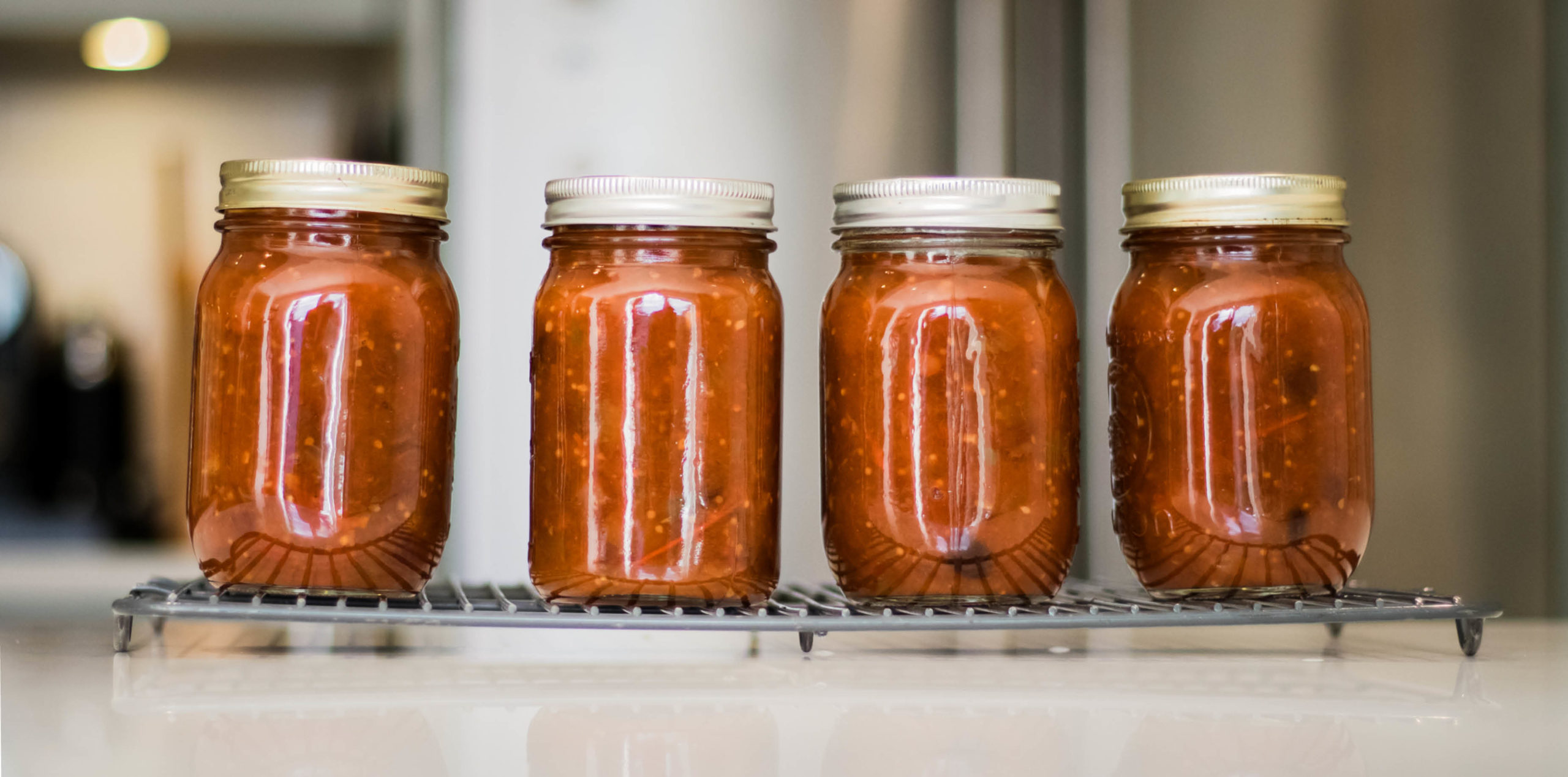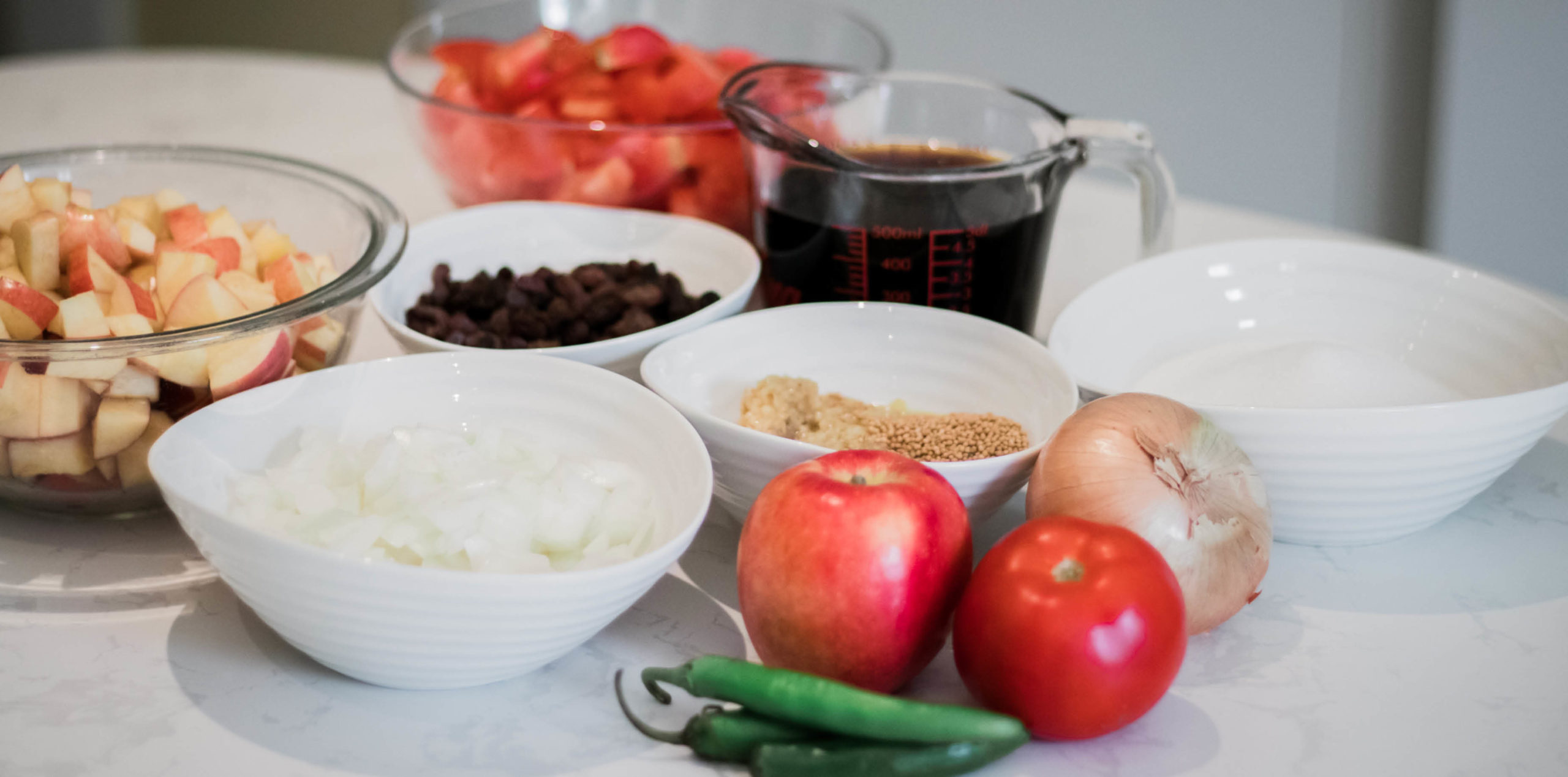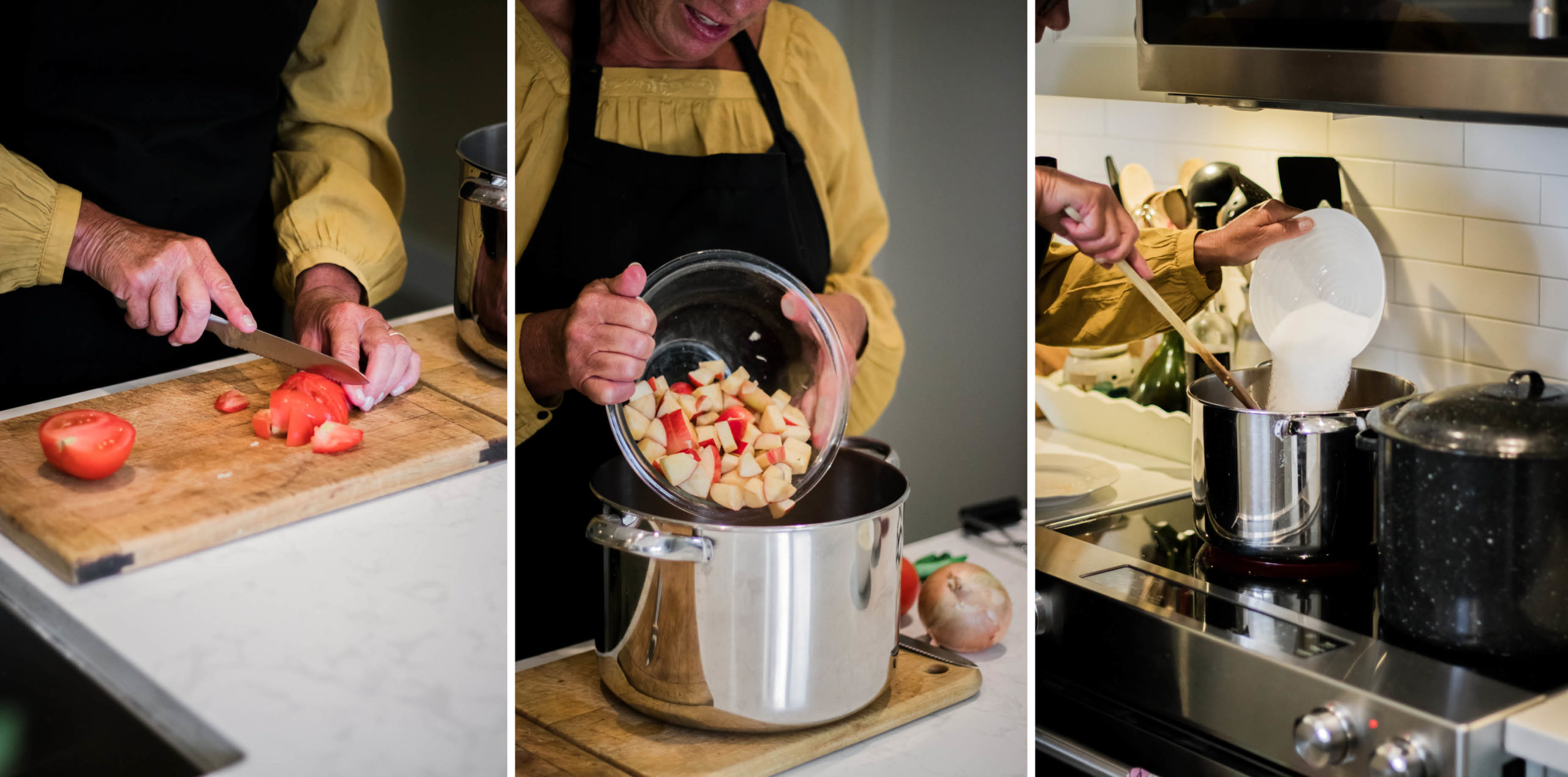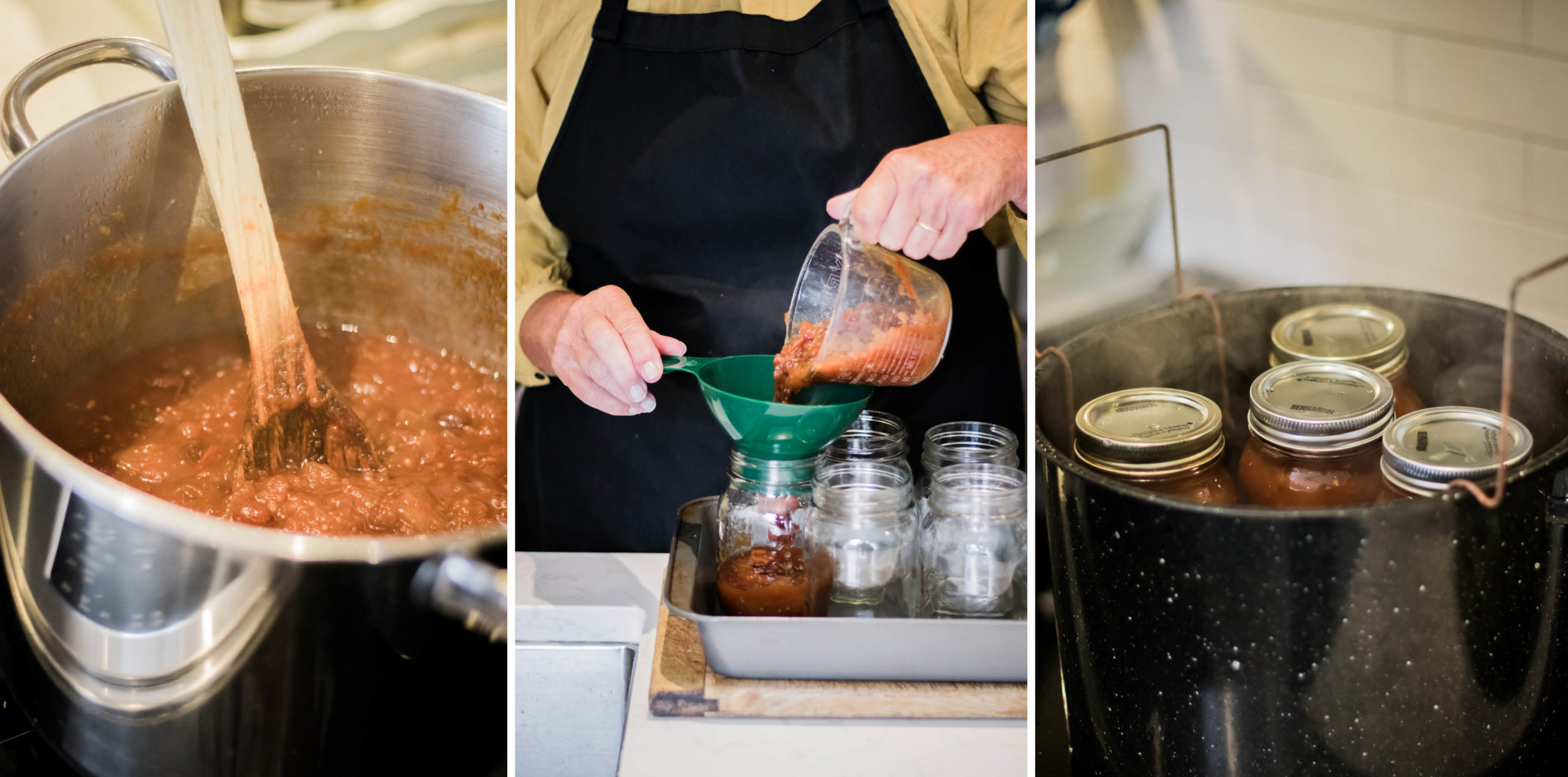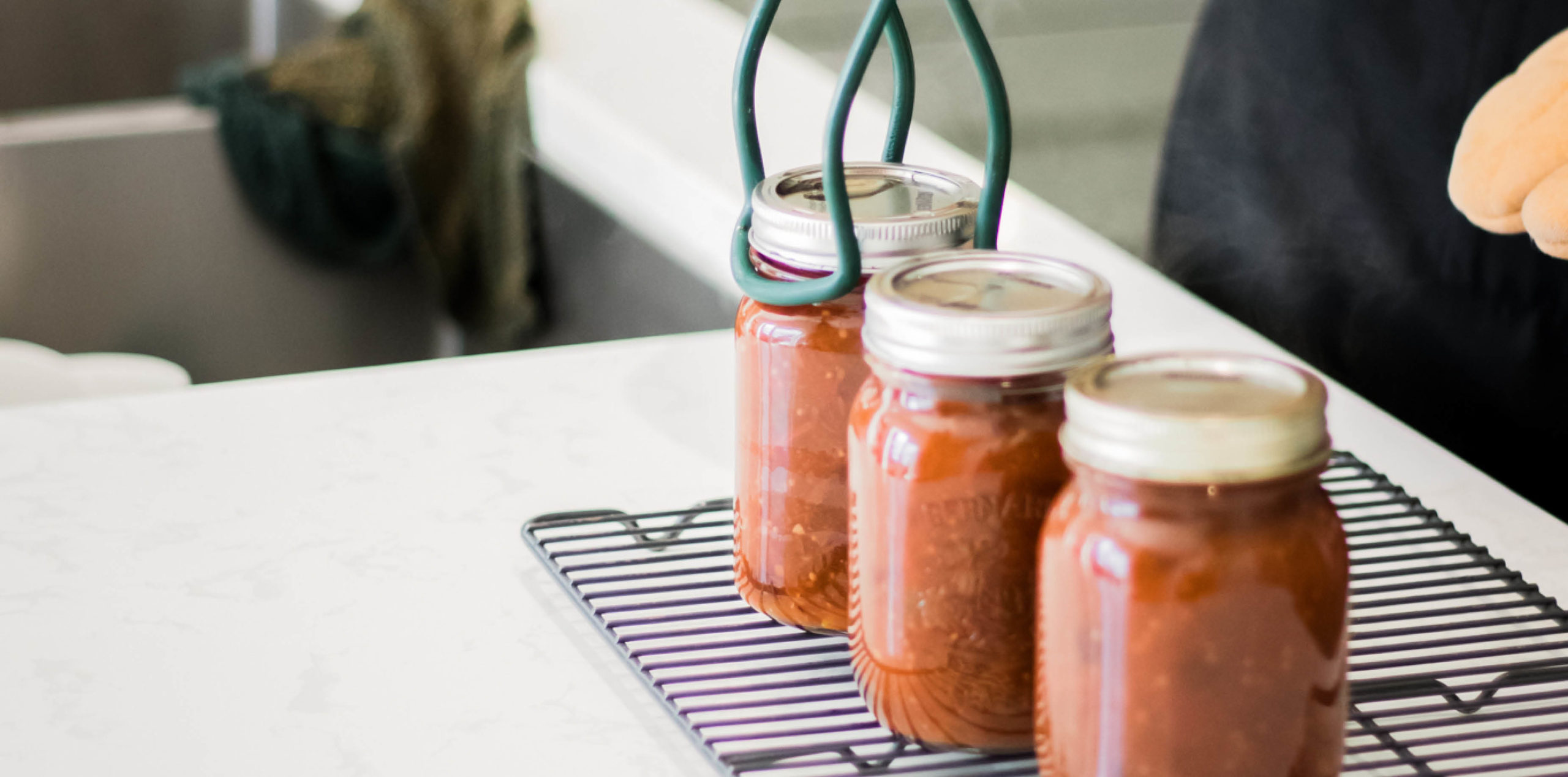by Joan Saunders | photos by Amanda Cribdon Photography –
Condiments are my jam. I’m a big fan of relish, mustard, mayo, ketchup, spicy spreads and yes, most definitely, chutney. I started making chutney years ago when we had a plum tree in our garden that produced millions of little yellow plums. I had to do something with those annoying plums that appeared in the multitudes each year; making and canning chutney became one of my favorite options. It’s sweet, it’s spicy and it’s so darn tasty. I serve it alongside anything and everything: cheese, chicken, beef, pork, roasted veggies and, of course, with curry.
There are thousands of different chutney recipes, and I’ve tried out a number of them. You can adjust the flavours of your chutney with different fruits, using or not using chilis, which type of vinegar is incorporated and how much sugar is added. Chutneys are among the easiest of condiments to make, and they have the advantage of lasting for months when stored. It’s always such a pleasure and so satisfying to open up the cupboard in the midst of winter and see the rich colours of chutneys made earlier that year.
They’re also a wonderful gift. Please don’t tell anyone, but I find myself saving the best ones just for my use at home, or I dole them out sparingly. I made an amazing chutney this past spring with oranges that were on sale; I bought way too many as I couldn’t resist a deal. I gave some of the jars of orange chutney to friends, but then finally tried it myself and was very pleasantly surprised. The few bottles remaining have been tucked away. We’ll see when they re-appear.
This month’s Bengal Chutney recipe is a well-known Indian condiment with many, many variations. If you prefer, it can be made without the tomatoes; I’ve done this a few times when I had lots of apples to use up. Chutneys generally simmer for a long time, as the fruit absorbs the vinegar as it cooks down. When you can pull a wooden spoon through the chutney as it’s cooking and there’s no runny liquid left, then it’s ready. And during this simmering stage, your kitchen will be filled with the most glorious aromas: sweet, spicy, tangy, rich, and very, very tantalizing. Try it; like me, you might just get hooked on making this versatile, full-flavoured condiment.
Bengal Chutney
6 apples, cored, chopped
6 tomatoes, chopped
2 onions, chopped
3 ½ cups malt vinegar
1 cup raisins
3 cloves garlic, finely chopped
2-3 jalapeno peppers, seeded, chopped
1 tbsp mustard seeds
½ cup grated ginger root
1 tbsp salt
1 ¼ cups sugar
Combine the apples, tomatoes, onions and vinegar in a large pot. Simmer for about 15 minutes or until the onions and apples are soft. Add remaining ingredients. Simmer until thick and sticky, about 1 hour (or more, depending on how quickly it cooks down).
Ladle into hot, sterilized jars, seal; process in a hot water bath for about 20 minutes. This chutney improves with ageing. Keep for a couple of months before using. Makes about 4 pints/8 cups. Recipe can be easily doubled.
Preserve the chutney by home canning once the chutney is ready:
Clean jars you want to use and put in pan in oven to sterilize for about 20 minutes at 250°. Put lids covered in water in small pot. Put on low on stovetop to soften seal. Keep screw tops for later.
Pull hot jars out of oven.
Have water bath canner on stove heating up while getting jars ready. Fill water bath canner 2/3 full of water.
Fill hot jars with chutney. Leave ½ inch headspace.
Use knife to run down insides of jars a couple of times to remove any air bubbles (if any).
Wipe the rims with clean cloth, seal with the lids, then screw on the bands until snug.
Place the jars in the boiling water bath canner for processing. Cover the jars with water by 1 inch. Bring the water to soft, rolling boil with lid on. Once at soft boil, process for 20 minutes.
Turn off the heat and carefully lift out the rack and remove jars from the canner. Set jars on baking rack to cool. Lids should not bounce back if sealed correctly. Press to check once cool.
Store jars in cool, dark place. Refrigerate after opening.
Take a look online or at cookbooks for more resources on home canning and other chutneys.
Adapted/amalgamated from:
www.greenbowl2soul.com/tomato-chutney-bengali-style/
Chutneys and Pickles by Barbara Beckett


